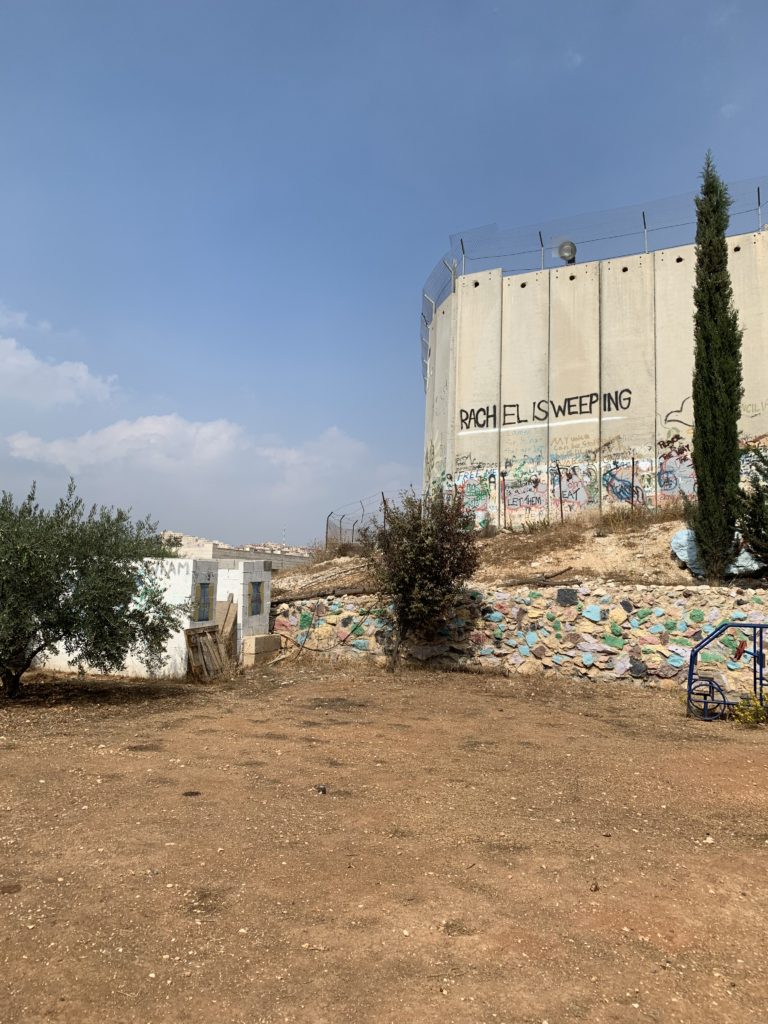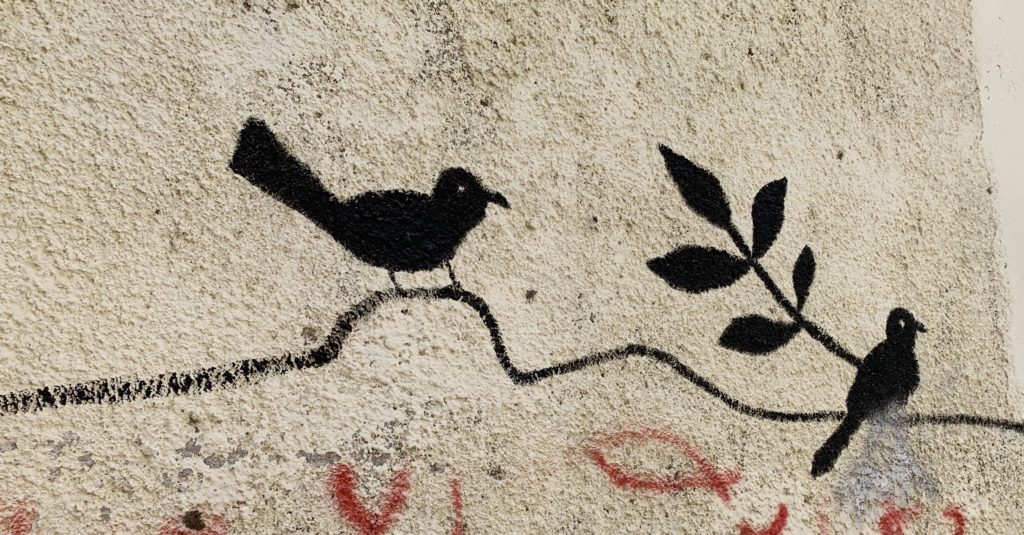17 Oct, Celene Lillie

A voice is heard in Ramah,
lamentation and bitter weeping.
Rachel is weeping for her children;
she refuses to be comforted for her children,
because they are no more.
~ Jeremiah 31:15/Matthew 2:18
Words seem wholly inadequate to describe what I’ve seen and heard and felt today in the walled city of Bethlehem. We learned of the reality of checkpoints, of people made prisoners in their own homes. We learned of children, little children, whisked from their bedrooms in the dark of night—beaten, jailed, released—with no rhyme or reason. We watched our tour guide pick up rubber bullets in the streets of Aida Refugee Camp—the most exposed community to tear gas in the world. Rachel weeps for her children—even though the wall zigs and zags to keep her tomb outside Bethlehem’s bounds.
But though Rachel weeps, Jeremiah continues, “there is hope for your future” (31:17). And the depth of the hope is unfathomable. It is in the man and his child in their doorway at Aida, extending hospitality through smiles as we pass. Hope is in the faces of the kids at Hope School (www.hopesschoolbeitjala.com)—given second and first and all kinds of chances in a place built on love, education, and understanding. Hope is at Wi’am Palestinian Conflict Resolution Center (www.alaslah.org) where Director Zoughbi tells us, “Hope is a form of non-violent resistance.” Hope is at Alrowwad Cultural and Arts Society (www.alrowwad.org) where they engage in what Dr. Abusrour calls “beautiful resistance…because we do not have the luxury of despair.” And because of this unrelenting hope of the people, even in the face of all the weeping, the walls themselves have been turned into a medium for hope.

